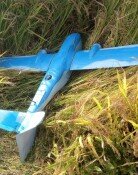Physical Education
More than half of middle and high schools students in Seoul are found to be physically weak. In a physical strength test last year, 28.4 percent of them received the lowest grade of five, and 24.8 percent got the second lowest grade of four. Those getting the highest grades of one and two comprised 25.3 percent, lower than half of the combined share of the two lowest grades. The decline in the physical strength of middle schoolers was as pronounced as that of those in high school. The blame is largely on the growing number of students addicted to computer games while shunning physical activity. Their preference for fast food is another important factor for the decline in their physical strength.
Exercise is important for the physical development of students, but class hours for physical education are declining. A report on school autonomy released by ruling Grand National Party lawmaker Park Young-ah found that after schools were allowed to adjust class hours for each subject within the range of 20 percent, 45.3 percent of elementary schools reduced class hours for physical education. Class hours for practical courses (42.7 percent) and art (42 percent) were also cut. Schools increased class hours for classes on Korean, English, and mathematics and reduced those for art and physical education, two subjects deemed unimportant for college entrance.
Koreans say the five powers needed for college entrance are the mothers power of information gathering, the fathers power of understanding, the economic power of grandparents, and a childs physical and brain power. Research says physical exercise is the only way to develop brain power after birth. Seongbuk Elementary School in Seoul, which has its students run in the morning, has seen scholastic performance rise remarkably. Subjects that need concentration should be backed by physical strength. A healthy constitution can be likened to a strong foundation of a building.
The National Medical Center has released guidelines on physical activities to prevent diseases. They contain 10 suggestions such as, To lead a healthy life, move as much as possible, and Adults should do aerobic exercise for half an hour every day and weight training more than twice a week. Another recommendation urges children and teenagers to exercise more than an hour a day. Unlike infants and young children, for whom providing a safe environment is most important since they control the amount exercise on their own, time should be allocated for children and teenagers to exercise. If schools want to enhance scholastic performance by their students, they should restore class hours for physical education.
Editorial Writer Chung Sung-hee (shchung@donga.com)



![‘건강 지킴이’ 당근, 효능 높이는 섭취법[정세연의 음식처방]](https://dimg.donga.com/c/138/175/90/1/wps/NEWS/IMAGE/2026/01/18/133181291.1.jpg)



